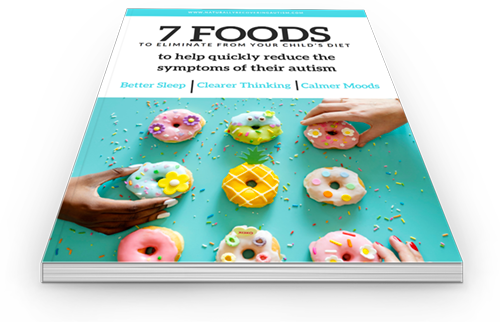While soy has its place in the diets of many cultures, modern soy consumption, particularly in the West, may come with a host of concerns that are worth understanding. From genetic modification to hormonal disruption, let’s dive into why eating soy might not be as healthy as you’ve been led to believe.
When it comes to healthy eating, soy is often marketed as a superfood—a plant-based protein alternative that’s good for your body and the planet. But beneath this lies a more complicated truth.
The Problem with Genetically Modified Soy
One of the biggest issues with soy today is that the majority of crops are genetically modified (GM). In fact, around 90-95% of soybeans grown in the United States are genetically engineered.

These modifications are designed to make soy crops resistant to herbicides like glyphosate, the active ingredient in Roundup. While this might seem like a win for agricultural efficiency, it has some troubling implications for your health and the environment.
Glyphosate exposure has been linked to a variety of health concerns, including endocrine disruption, cancer, and gut microbiome imbalances.
When you consume products made from genetically modified soy, you’re also potentially ingesting residual glyphosate. Over time, this can accumulate in your body, contributing to chronic health problems.
Additionally, genetically modified organisms (GMOs) are often associated with monoculture farming practices, which deplete soil nutrients, harm biodiversity, and contribute to ecological imbalances.
By consuming genetically modified soy, you’re indirectly supporting an agricultural system that may be unsustainable in the long term.
Phytoestrogens: Hormonal Disruptors in Disguise
Soy is rich in phytoestrogens, plant-based compounds that mimic the hormone estrogen in the body. While small amounts of phytoestrogens may have certain benefits, such as promoting heart health, excessive consumption can disrupt your hormonal balance.
This is particularly concerning for individuals with hormone-sensitive conditions, such as thyroid disorders, estrogen dominance, or polycystic ovary syndrome (PCOS). Soy is a food that is associated with blocking the conversion of T4 to T3 which reduces the ability of the thyroid to function.
For men, high levels of phytoestrogens from soy can potentially lower testosterone levels, leading to issues like reduced muscle mass, energy levels, and even fertility. For women, it can interfere with menstrual cycles and exacerbate hormone-related conditions.
The effects of phytoestrogens are particularly concerning for infants and children. Soy-based infant formulas, for example, have been criticized for exposing developing bodies to high levels of these compounds during critical periods of growth. Some research even suggests that this could impact reproductive health later in life into adulthood.
GMO soy has been linked in studies to anxiety and aggressive behavior. Many people who are vegetarian or have allergies to dairy use soy as a substitute. This is a poor alternative, unfortunately dairy is not good either. Coconut milk or almond milk are far better alternatives.
Tainted Crops and Contaminated Products
Another issue with soy lies in the way it’s grown and processed. In addition to being genetically modified, soy crops are often exposed to high levels of pesticides and herbicides. These chemicals don’t just wash away; they can remain on the crops and make their way into the foods you eat.
Moreover, many soy-based products are highly processed, stripping away any natural nutrients and leaving behind a food that’s loaded with additives, preservatives, and artificial flavors.
From soy protein isolates in energy bars to soy lecithin in processed snacks, these ingredients are far from the whole, natural foods our bodies were designed to thrive on.
The bad, omega-6 type fats include corn oil, safflower oil, sunflower oil, peanut oil, canola oil, and soybean oil. These oils promote inflammation and suppress the immune system. Most restaurants, especially fast food restaurants, use the bad fats for cooking and frying. Do not use them.
Soy and the Environment
Beyond individual health, soy cultivation has a significant environmental impact. As global demand for soy increases—much of it to feed livestock for meat production—vast amounts of forests, including the Amazon rainforest, are being cleared to make room for soy plantations.
This deforestation not only threatens wildlife but also contributes to climate change by releasing carbon stored in trees and soil.
Even for those who consume soy as a plant-based alternative to meat, it’s worth questioning whether the environmental cost of mass soy production aligns with the sustainability goals often associated with plant-based diets.
What Are the Alternatives?
If you’re looking to minimize soy in your diet, there are plenty of alternatives that offer similar nutritional benefits without the downsides. Some options include:
- Other plant-based proteins: millet, buckwheat, nuts, and hemp seeds are excellent sources of protein and nutrients.
- Fermented soy products: If you do consume soy, opt for fermented varieties like tempeh, natto, or miso. The fermentation process reduces phytoestrogen content and makes nutrients more bioavailable.
- For those who eat animal products, high-quality meats can provide complete protein without the hormonal disruption associated with soy. Always eat Grass-fed or pasture-raised meats, line caught fish, and organic poultry that says no antibiotics or hormones.
- Coconut oil and organic, cold pressed, extra virgin olive oil are healthy oils you can use.
- Healthy dairy substitutes include coconut milk, almond milk, and hemp milk.
Conclusion: Rethink the Soy Hype
While soy can be a convenient and affordable source of protein, the modern reality of soy farming and production raises valid concerns about its health and environmental impacts. From its genetic modification to its potential role as a hormonal disruptor, soy is not the miracle food it’s often marketed to be.
By choosing alternatives or consuming soy in moderation—and opting for organic, non-GMO, and fermented varieties when you do—you can make more informed choices that support both your health and the planet.
So the next time you’re about to reach for that soy latte or tofu stir-fry, take a moment to consider the bigger picture. Your body—and the environment—will thank you.
Please also listen to my Interview with Dr. Stephanie Seneff on Glyphosate and Autism [Podcast Episode 10]
Get Your Free Food Guide!
Quickly Reduce Your Child’s Symptoms of Autism by Eliminating 7 Foods Most People Consume Daily!
The first crucial step of autism recovery is to begin restoring health to the gut and the immune system.
The health of the gut is directly linked to the health of the brain and therefore to the symptoms of autism. In fact, 80% of the immune system comes from the gut so if the gut is not healthy, then the brain can’t thrive, and the immune system is compromised. It’s a vicious cycle, but thankfully, it’s one that we can put an end to by first eliminating harmful foods.
- Harmful Foods: Identify the foods that worsen autism symptoms and understand the science behind their impact.
- Smart Food Choices: Learn about easy dietary swaps that can significantly enhance sleep, clarity of thought, and emotional well-being.
- Practical Implementation: Get valuable tips on how to implement these dietary changes easily and effectively.
This is for informational purposes only and is not meant to diagnose or treat. Every child’s level of recovery is different. No two people are the same. It is never implied that all children will have the same outcome. Results are all based on individual biology and the work that is done. This process takes time and various steps, effort and resources need to be weighed. Our programs are intended to help you become more knowledgeable and guide you to help bring your child a better quality of life, whatever that may be. We want to help by giving great content, direction and strategies that move you forward. Nothing on this page or any of our websites is a promise or guarantee of results or future outcomes. The results on this page and any of our websites are not typical or promised. In fact, there will be people who purchase this and other programs and never put the work into implementing the strategies taught and therefore will achieve little to no results. Our more detailed earnings disclaimer, privacy policy, and terms and conditions for this program and website can be accessed via the links below. We hold ourselves (and you) to a high standard of integrity. We are cheering you on every step of the way.












